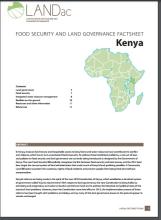/ library resources
Showing items 1 through 9 of 15.As a signatory to the Convention on Biological Diversity and to the Ramsar Convention on Wetlands, New Zealand has international responsibilities to protect and restore wetland ecosystems.
Although China still holds land in collective and state ownership, land use rights have been largely privatized. While transactions for forestland use rights have taken place for more than two decades, few detailed investigations of the transactions have been conducted.
Kenya is going through a period of intense transition. The country's main development policy, Vision 2030, is just entering the second Medium Term Plan of Implementation from 2013.
Public land is a resource that should be effectively managed in the public’s best interest in line with provisions of the Constitutions of Kenya and the Land Act.
THE MINING ACT No. 12 of 2016
Date of Assent: 6th May, 2016
Date of Commencement: 27th May, 2016
In Kenya, insecure land tenure and inequitable access to land, forest and water resources have contributed to conflict and violence, which has in turn exacerbated food insecurity.
For over a century the foundation of biological conservation has been the development of open space networks either through outright public land acquisition or appropriate management of private lands.
BACKGROUND: Soil organic carbon (SOC) is fundamental for mitigating climate change as well as improving soil fertility. Databases of SOC obtained from soil surveys in 1981 and 2011 were used to assess SOC change (0–20 cm) in croplands of Heilongjiang Province in northeast China.
Pagination
Land Library Search
Through our robust search engine, you can search for any item of the over 73,000 highly curated resources in the Land Library.
If you would like to find an overview of what is possible, feel free to peruse the Search Guide.





